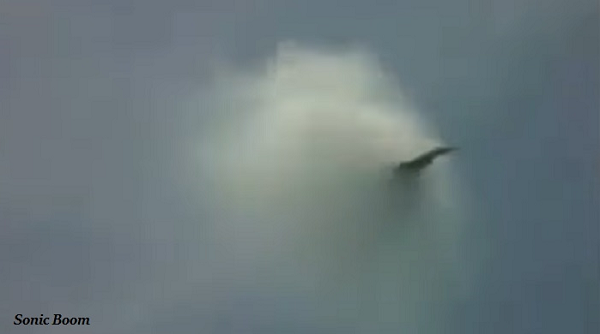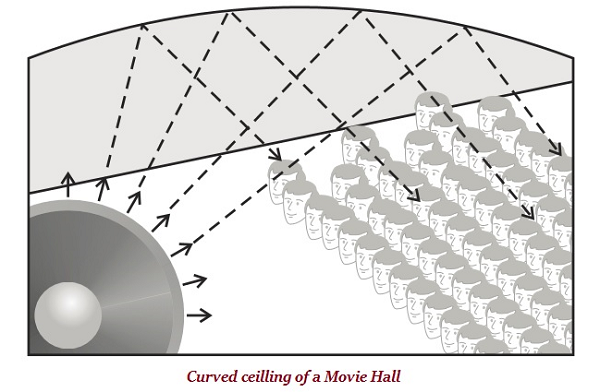
- Physics - Home
- Physics - Force and Pressure
- Physics - Friction
- Physics - Some Natural Phenomena
- Physics - Motion
- Physics - Force and Laws of Motion
- Physics - Gravitation
- Physics - Mass and Weight
- Physics - Work and Energy
- Physics - Light
- Physics - Reflection and Refraction
- Images Formed by Spherical Mirrors
- Physics - Refraction of Light
- Physics - Spherical Lenses
- The Human Eye & Colorful World
- Refraction of Light Through a Prism
- Physics - Electricity
- Chemical Effects of Electric Current
- Magnetic Effects of Electric Current
- Physics - Electric Motor
- Physics - Source of Energy
- Physics - Sound Part I
- Physics - Sound Part II
- Speed of Sound in Different Media
- Physics - The Solar System
- Physics - Stars and The Solar System
Physics - Speed of Sound in Different Media
Introduction
The speed of sound depends on the type and properties of the medium through which it is traveling.
The speed of sound in a particular medium depends on temperature and pressure of that medium.
The speed of sound decreases when it passes from solid to gaseous state of a given medium.
In any medium, if the temperature increases, the speed of sound also increases and vice versa.
For example, the speed of sound in air at 00C is 331 m s1 and at 220C it is 344 m s1.
The following table illustrates the speed of sound in different media at 250 C −
| State | Substance | Speed in m/s |
|---|---|---|
| Solids | Aluminum | 6420 |
| Nickel | 6040 | |
| Steel | 5960 | |
| Iron | 5950 | |
| Brass | 4700 | |
| Glass | 3980 | Liquid | Sea Water | 1531 |
| Distilled Water | 1498 | |
| Ethanol | 1207 | |
| Methanol | 1103 | Gases | Hydrogen | 1284 |
| Helium | 965 | |
| Air | 346 | |
| Oxygen | 316 | |
| Sulphur Dioxide | 213 |
Sonic Boom
When the speed of any object surpasses the speed of sound waves, the speed of respective object is known as supersonic speed. For example, the speed of bullets, jet aircrafts, etc.

When a sound producing source itself moves with a speed higher than that of the sound, it produces the shock waves in air.
The shock waves carry a large amount of energy, which causes air pressure variation in its immediate environment.
The shock waves produce a very sharp and loud sound, which is known as sonic boom.

Reflection of Sound
When sound waves strike with a solid wall or even liquid, it gets reflected back.
Echo
If you shout or clap in a (especially) mountains region, after a while, you will hear the same sound, it is known as echo.
The sensation of sound continues in our brain for about 0.1 s; therefore, to hear a distinct echo sound, the time interval between the original sound and the reflected sound must be at least 0.1s.
To hear the distinct echo sound, the minimum distance of the obstacle from the source of sound must be 17.2 m. However, this distance is variable, as depends on temperature.
Reverberation
The repeated reflection that results in the persistence of sound waves is known as reverberation. E.g. in a big hall (especially, an auditorium), the excessive reverberation can be heard.
Usually, the ceilings of concert or movie halls are given curved shape so that the sound waves after reflection reach all the corners of the hall (see the image given below).

Range of Audible Sound
The audible range of sound for the human beings varies between 20 Hz to 20000 Hz.
However, as people grow older their ears gradually become less sensitive to higher the sound frequencies.
The sounds of frequencies less than 20 Hz are known as infrasonic sound or infrasound.
Whales, rhinoceroses, and elephants produce sound in the infrasound range.
The sound of frequencies higher than 20 kHz are known as ultrasonic sound or ultrasound.
Ultrasound technology is used extensively in different industries and for the medical purposes.
Dolphins, bats, and porpoises produce ultrasound sound.
Hearing Aid
The hearing aid is an electronic device that help deaf people to listen properly.

A hearing aid is a battery operated device that receives sound through a microphone.
SONAR
The term SONAR stands for Sound Navigation And Ranging.

Sonar is an advanced device that uses ultrasonic waves to measure the direction, distance, and speed of underwater objects (submarines); depth of sea; under water hills; valleys; sunken ships; etc.